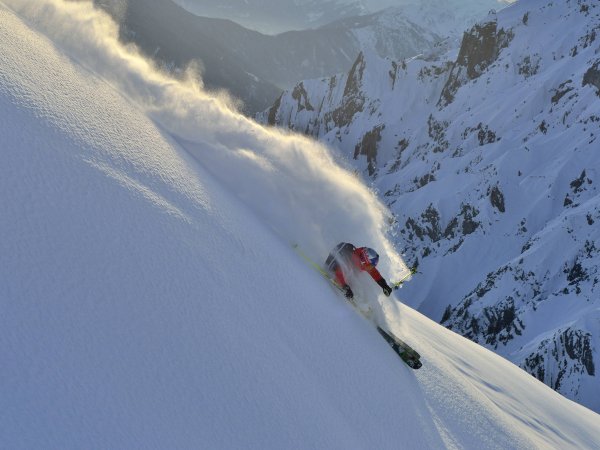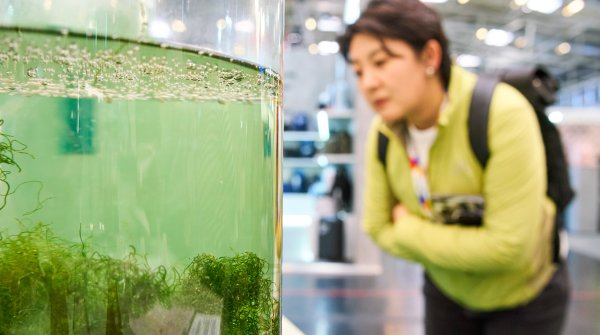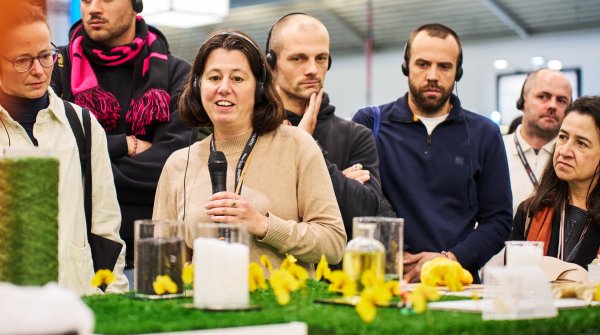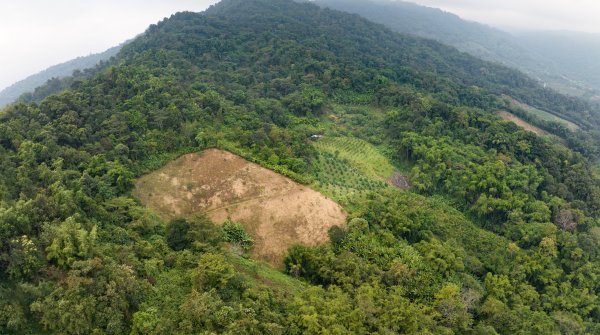The crunch of fresh snow under the boards, the crystal clear mountain air in your face, the sublime feeling of making perfect turns on a still untouched slope - for many of us, skiing and snowboarding is still the greatest thing imaginable.
But how much longer can we look forward to enjoyable descents against a picturesque winter backdrop? The effects of climate change are already clearly noticeable in the mountains. Winter sports seasons are getting shorter, the snow line is rising. The Alps are particularly affected. A collective study led by the Italian research institute Eurac Research has come to an alarming conclusion. According to the study, snow days in the entire Alpine region have decreased noticeably over the past 50 years, by ten to 35 percent in winter and even more in spring.
Winter sports tourism is in a tricky situation. On the one hand, it is suffering from climate change and ski communities have to come up with a lot of ideas to offer their guests a rewarding winter experience. On the other hand, often energy-intensive winter sports tourism with corresponding CO₂ emissions is fueling the dramatic development even more.
Opinions differ on the question of how damaging winter sports actually are for the environment. Critics complain that ski slopes, lifts, water reservoirs and parking lots take up huge areas of land and destroy the environment. Especially since some ski areas are still growing. In addition, snow cannons consume vast amounts of energy and water - not to mention the noise they generate. The energy used in the ski area is green in many places, however, and often comes from the resort's own photovoltaic or hydropower plants, say skiing advocates. And the water from the reservoirs flows back into nature as the snow melts. In addition, a snow cover - also artificially produced - offers protection from steel edges and frost, from water and wind.
The arguments of both sides cannot be completely dismissed. With regard to climate-damaging CO2 emissions, however, they are only secondary, because skiing as an activity plays a subordinate role here. By far the biggest environmental sin in winter sports is the journey to and from the slopes - especially if you travel to the slopes by car or even fly.
CO2 balance: How much of an impact does the journey to the ski resort have?
No matter how individual ski resorts differ in their exact values, the majority of studies conclude that travel accounts for the largest share of CO2 emissions during a ski vacation. One study, which looked at several French ski resorts, puts the footprint of a day on the slopes at nearly 50 kg of CO2. 52% of that is already produced on the way to the ski resort - so getting there adds quite a bit of weight. But this also means the greatest leverage: for example, the journey alone in a car produces 22 kg of CO2; with four people it is only 5.5 kg per person. Biggest environmental sin: Traveling by plane and then car. Here, around 62 kg of CO2 are produced even before the powdering.
Ski communities have long since recognized that there is a need for optimization when it comes to travel. They are now making greater efforts to identify options with which guests can save emissions on the way to their vacation.
One approach to reducing CO2 emissions is electromobility - although e-cars sometimes don't enjoy a good reputation in winter; after all, their range decreases at low temperatures. Nevertheless, modern vehicles can cover decent distances. If you switch to eco mode - if available - and don't set the heating to sauna, you can cover even more kilometers.
A few years ago, the municipality of Lech, together with BMW and Vorarlberger Kraftwerke AG, built the "Green Garage" on the Arlberg. The parking spaces there are equipped with an e-charging infrastructure and offer cars a warm shelter. In winter, when cold slows down the charging process, this is particularly valuable. The Vorarlbergers also have e-mobility in mind when it comes to public transport. In winter 2019/20, the test started with an electric bus from the well-known "blue fleet" between Lech and Zürs and has already transported one million visitors* since then.
Those responsible at the Wilder Kaiser have also created an incentive to travel by e-car. There are two charging stations in the parking deck of the Scheffau mountain railroad, which can only be used with a valid mountain railroad ticket and are then free of charge. Guests simply pick up the necessary access code at the ticket office.
Even if your own car does not have an electric drive, there is potential for CO2 savings when traveling to the ski area. The more people who share a vehicle, the better for the bottom line. Resorts in North America are therefore encouraging the ski community to form carpools.
Sundance Mountain Resort in the US state of Utah has always been a pioneer in sustainability. Its former owner, movie star Robert Redford, was passionate about preserving the wonderful mountain environment. The purists among the ski and snowboard fans are happy about this. If they want to go powdering on weekends, they should opt for carpools if possible. With four passengers or more per car, parking remains free of charge.
A different approach was taken last season in the nearby Alta Ski Area and Snowbird. There, those who rolled into the parking lot on weekends or holidays with four or more people in the car were entered into a prize draw.
In some Alpine towns in Switzerland, even the best carpool won't get you far. Zermatt, for example, is completely car-free. The same applies to Saas-Fee, where the end of the line for cars is at the village entrance at the latest. The vehicle spends the vacation either in the parking garage with 1,800 spaces or outside. Some hotels organize shuttle services with electric cabs that take guests from the parking lot to the front door. Those who prefer to rely on muscle power instead of electric drive can borrow a handcart from the tourist office and pull the luggage to the front door of the respective accommodation.
If it's up to those responsible for the Bödele family ski area in Austria, snow lovers should do without their cars altogether. Under the motto "Bödele macht mobil" (Bödele makes mobile), they want to encourage travel by bus. Those who show their valid bus ticket at the ticket office will receive a discount when buying their ski pass. If you are traveling with a ski pass and ski equipment, the bus ride up to Bödele is also free of charge.
In general, discounts seem to be an effective means of making low-emission travel more palatable to winter sports fans. Morzine in France, for example, offers the AlpinExpress Pass. To benefit from its advantages, travelers must submit proof of purchase of a train ticket and their travel data. In return, they receive a personal certificate. On presentation of the document, there are discounts at local partner businesses, for example when purchasing ski tickets or renting equipment. Some restaurants are also part of the partner network.
In Japan, even the train journey to ski destinations such as the Hakuba Valley with its nine areas is an experience in itself. At least if you take the ultra-fast Shinkansen. The bullet trains with the iconic nose race from Tokyo or Osako to Nagano station, for example. There, you change to the bus to Hakuba, which runs almost hourly. Private transfers are also available.
However, a good train connection to the vacation destination alone is usually not enough to get ski and snowboard enthusiasts off the road and onto the rails. After all, they should not suffer any disadvantage when they arrive on site because they do not have to use their cars. The "Alpine Pearls," an association of resorts in Germany, Austria, Italy and Slovenia, are well aware of this. The Alpine communities are committed to nature-friendly vacations and give their visitors a mobility guarantee for the duration of their stay. The services include train station shuttles, call buses, rental bikes - or even horse-drawn carriages. Accommodations, lifts, stores and sights are thus only a short ride away.
"Local mobility is one of the key barriers for many people," says Khaled El-Hussein, head of marketing for Austria and Italy at DB Fernverkehr AG, with regard to rail travel. However, he adds, there are already numerous positive examples in the Alpine region and the low mountain ranges - be it in Tyrol, the Salzburg region, Carinthia, South Tyrol, Thuringia or the Allgäu.
Or in the Italian vacation region of Trentino. "The mobility services there are top-notch and easy to use," says El-Hussein. "With the free Trentino Guest Card as an app, guests can use public transportation throughout Trentino immediately after arriving by long-distance train." This applies to all regional rail and bus services whose departure and destination are in Trentino. However, only a small number of potential guests are aware of this offer.
Yet a growing number of travelers are generally willing to take the train on vacation. El-Hussein refers to a study conducted by Deutsche Bahn in the pre-Corona phase. At that time, just under 40 percent of those surveyed said they would be willing to do without a car for their winter vacation trip to the Alps if better local mobility were available. "However, just under 70 percent of those surveyed did not hear any active impetus from tourism for an alternative and climate-friendly form of travel. Yet there are now many excellent offers for mobility in ski communities." But these also need to be showcased, explains El-Hussein.
Deutsche Bahn has created such a "showcase" together with the winter sports initiative "Dein Winter. Your sport." with the information platform WinterRail has launched such a "showcase. "With this, we map a selection of many destinations that are easily accessible by rail," says El-Hussein. There are currently just under 100 German and European winter sports destinations. "We also show what mobility offers are available locally." Anyone wishing to be present at WinterRail must be able to guarantee their guests a certain level of mobility.
However, the platform is not limited to locomotion alone, but takes a holistic approach. "In winter sports, it is the transport of ski equipment that causes concern," El-Hussein says. "That's why we emphasize that there is perfect equipment for rent on site." A cooperation with INTERSPORTRENT also brings rail travelers a discount on rental equipment.
The aim of WinterRail is to reduce fears through information and to provide impetus for the choice of rail, says El-Hussein. Overall, the platform is already well received. But awareness should continue to grow. "Our concern is not to proselytize winter vacationers*. But we want to convince those who are already considering a climate-friendly journey. And we believe that our offer comes just at the right time."
Especially in view of the fact that many winter sports communities are gearing their infrastructure towards a car-free stay for their guests. It has probably never been so easy to travel to white mountain worlds with a green conscience.
- ISPO awards
- Mountain sports
- Bike
- Design
- Retail
- Fitness
- Health
- ISPO Job Market
- ISPO Munich
- ISPO Shanghai
- Running
- Brands
- Sustainability
- Olympia
- OutDoor
- Promotion
- Sports Business
- ISPO Textrends
- Triathlon
- Water sports
- Winter sports
- eSports
- SportsTech
- OutDoor by ISPO
- Heroes
- Transformation
- Sport Fashion
- Urban Culture
- Challenges of a CEO
- Trade fairs
- Sports
- Find the Balance
- Product reviews
- Newsletter Exclusive Area
- Magazine








